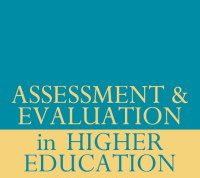Free public lecture:
The wicked problem of technologies in education:
the need for playful designs
the need for playful designs
Associate Professor Michael Henderson
What would happen if we stopped pretending that technologies were solutions to teaching or learning?In his lecture, Associate Professor Henderson will discuss the ‘wicked problem’ of when digital technologies are used in education. In responding to this ‘wicked’ complexity, he will propose that we can adopt design methodologies in our teaching preparation and in student learning, In doing so he will explain the stages of design thinking and will also share several creative thinking exercises that can be used with students and teachers.
What would happen if we stopped pretending that technologies were solutions to teaching or learning?In his lecture, Associate Professor Henderson will discuss the ‘wicked problem’ of when digital technologies are used in education. In responding to this ‘wicked’ complexity, he will propose that we can adopt design methodologies in our teaching preparation and in student learning, In doing so he will explain the stages of design thinking and will also share several creative thinking exercises that can be used with students and teachers.
This is a free event. Attendees can receive a certificate of attendance for their professional learning records.
Event details
Date: Tuesday 18 October, 2016
Time: Refreshments served 6pm, lecture starts at 6:30pm, concludes at 7:30pm
Location: Monash University, Clayton Campus, Melbourne.
.
 ——————————-
——————————-Links to curriculum and teacher standards:
- This lecture will describe the process of design thinking. Design thinking is referred to in the Australian Curriculum as a valuable way to engage students in deep research and action oriented idea development. It is also referred to by AITSL as a method to engage educators in professional learning and for school change. It is one approach to problem solving and creative thinking (see APST Standard 3.3).
- This lecture will explain why technology is so hard to implement and how we might ‘problem solve’ the situation to better achieve our goals. Digital technologies and ICTs are a feature of both the Australian Curriculum and the teacher standards. In particular teachers are expected to use effective teaching strategies that integrate ICTs (see APST Standard 2.6).







